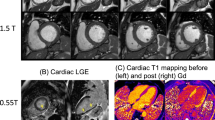Summary
To our knowledge no comparative studies investigating patients' acceptance of different MR systems have been published. We therefore studied a number of subjective criteria to evaluate both patients' acceptance of and subjective conditions during magnetic resonance imaging (MRI) studies. MRI studies were performed using four separate systems. Two were conventional body MR systems operating at 1.0 or 1.5 Tesla, another was a 0.2 Tesla open whole-body MR system, and the last was a 0.2 Tesla MR system dedicated to the study of extremities. Forty patients for each MR system (total of 160 patients) participated in a standardized, written interview focusing on aspects of their subjective condition, including their perception and acceptance of different factors relevant to the study on respective MR systems. The patients' subjective condition and acceptance was predominantly positive for all MR systems. Differences between MR systems were noted with respect to noise, width of patient gantry, comfort of patient positioning and degree of well-being. Such differences, however, do not lend preference to the use of one particular type of MR system. Therefore, the choice of MR system should be based on the technical features required for the intended studies.
Zusammenfassung
Vergleichende Untersuchungen zur Akzeptanz verschiedener MR-Geräte durch die Patienten sind bisher in der Literatur nicht bekannt. Daher wurden in dieser Arbeit verschiedene subjektive Kriterien erhoben, die Aufschlußüber die Patientenbefindlichkeit und Akzeptanz von MR-Untersuchungen an Hochfeldganzkörpersystemen mit 1,5 und 1,0 T Feldstärke, einem offenen 0,2-T-Niederfeldganzkörpersystem sowie einem 0,2 T dedizierten Niederfeldsystem für periphere Gelenke geben sollen. An jedem MR-System wurden 40 Patienten (Gesamtzahl 160 Patienten) standardisiert zu Aspekten der subjektiven Befindlichkeit sowie der Wahrnehmung und Akzeptanz von gerätebezogenen Faktoren befragt. Bei allen MR-Systemen wurde die Befindlichkeit und Akzeptanz als ganz überwiegend positiv eingeschätzt. Dennoch wurden Unterschiede in der Wahrnehmung von Lautstärke, Enge des Untersuchungsbereiches, Bequemlichkeit der Lagerung und Grad des Wohlbefindens ermittelt. Allerdings erscheinen diese Unterschiede nicht so gravierend, daß sie als entscheidende Kriterien für die Präferenz einer bestimmten Geräteart anzusehen sind. Die Gerätewahl sollte sich dementsprechend nach den untersuchungstechnischen Möglichkeiten richten.
Similar content being viewed by others
Author information
Authors and Affiliations
Rights and permissions
About this article
Cite this article
Heuck, A., Bonél, H., Huber, A. et al. Patient acceptance of high-field whole-body MR systems, open MR systems and dedicated MR systems for the extremities. Radiologe 37, 778–784 (1997). https://doi.org/10.1007/s001170050282
Issue Date:
DOI: https://doi.org/10.1007/s001170050282




